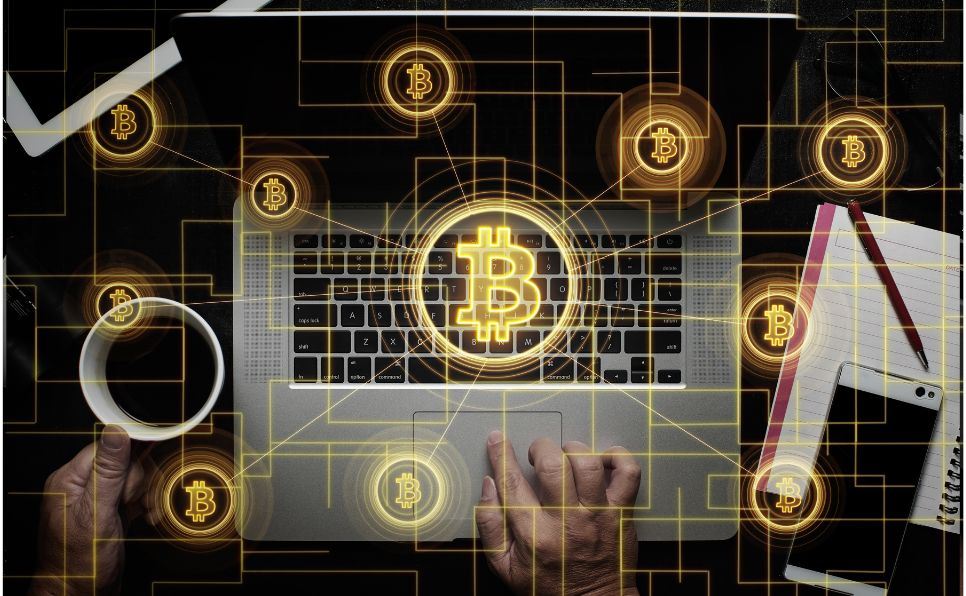If you’re familiar with the wide range of available cryptocurrencies, it’s likely you’ve heard of blockchain technology. Over the years, it has evolved into the backbone of not only a new internet but also one of the most cutting-edge technologies in the world: cryptocurrencies. It is now easy to buy cryptocurrencies everywhere, such as by utilizing our Bitcoin ATM in Los Angeles. But do you really understand what blockchain technology is? Here’s what you should know.
Blockchains Hold Shared Information
Just like a Google spreadsheet, Blockchains contain shared information stored in any location. This means it’s easy to verify and keep track of the information; plus, there’s no one single controller, thus no single point of failure. Blockchains rely on the internet as their main source of functionality, and the internet has a pretty good track record of being reliable.
How Does Blockchain Technology Keep Data Secure?
The most fundamental aspect of blockchain technology is the distributed ledger. Rather than storing information in a centralized database that is vulnerable to hacking, manipulation, and other forms of corruption, blockchain uses a distributed ledger that is stored on a network of computers. Each computer on the network holds a copy of the ledger, making it extremely difficult to tamper with or alter the data.
To add a new block to the chain, a consensus mechanism is used to validate the transaction or data. This means that multiple nodes on the network must agree that the transaction is legitimate and that it should be added to the chain. This consensus mechanism provides a high degree of security, as it makes it very difficult for an attacker to alter or delete data on the ledger.
Transparency And Incorruptibility Are Made Possible By Blockchain Technologies
The blockchain is a shared database that stores information about all the transactions that have ever taken place on the network, and it is maintained by a network of nodes or computers that are spread out around the world.
One of the key features of the blockchain is that it is transparent and open to the public. This means that anyone can view the ledger and see all the transactions that have taken place on the network. This transparency is essential to maintaining the integrity of the network, as it allows all participants to monitor and verify the transactions that are taking place.
When a new transaction is made on the network, it is broadcast to all the nodes on the network. These nodes use complex algorithms and cryptographic techniques to validate the transaction and ensure that it is legitimate. The validation process involves checking that the transaction meets all the necessary criteria, such as having the correct inputs and outputs, and that it is not a duplicate or fraudulent transaction.
Once the transaction has been validated by the nodes, it is added to the blockchain. Each block on the chain contains a unique cryptographic hash that identifies the block and its contents. The hash of each block is created using the information from the previous block, creating a chain of blocks that is virtually unbreakable. If an attacker wants to change the data in a block, they would need to change the hash of that block, as well as the hash of every subsequent block in the chain. This would require an enormous amount of computing power, making it virtually impossible to corrupt the blockchain.
As new transactions are added to the blockchain, they are also verified and validated by other nodes on the network. This process ensures that all the nodes on the network have a consistent view of the state of the ledger, and that the integrity of the network is maintained.
What Other Technology Does Bitcoin Use?
In addition, the blockchain also employs a consensus mechanism to ensure that all the nodes on the network agree on the state of the ledger. In the case of Bitcoin, the consensus mechanism is called proof-of-work (PoW). This mechanism requires nodes on the network to solve a complex mathematical puzzle in order to add a new block to the chain. This puzzle requires a significant amount of computational power to solve, making it very difficult for an attacker to add fraudulent data to the chain.
Overall, the blockchain’s public network maintains the integrity of cryptocurrency transactions by providing a transparent and open ledger that is distributed across a network of nodes. This transparency allows all participants to monitor and verify the transactions that are taking place, while the distributed nature of the network ensures that the ledger is secure and tamper-proof.
Two Main Points of Difference
Did you know that the blockchain network checks in with itself every 10 minutes? It’s called a “block” chain because the group of transactions that occur within each time frame is called a “block.” There are two main things that set the blockchain apart from other features on the internet: transparency and incorruptibility.
- First, it is transparent because everyone has access to view the entire public network.
- Second, it’s extremely difficult to corrupt the network because you’d need a ton of computer power in order to override the network.
Cryptography
Blockchain uses complex mathematical algorithms and cryptographic techniques to ensure that data is secure and cannot be easily tampered with. Each block on the chain contains a unique cryptographic hash, which is a digital fingerprint that identifies the block and its contents. If any data in the block is altered, the hash will change, making it immediately obvious that the data has been tampered with.
In addition, each block is linked to the previous block in the chain using a cryptographic hash. This creates a chain of blocks that is virtually unbreakable. If an attacker wants to change the data in a block, they would need to change the hash of that block, as well as the hash of every subsequent block in the chain. This would require an enormous amount of computing power, making it virtually impossible to corrupt the blockchain.
New Uses For Blockchain Technology
Blockchain technology is a versatile technology that can be used in a wide range of systems and applications. While it was originally developed as the underlying technology for cryptocurrencies, it has since found uses in a variety of other industries and applications.
Here are some examples of systems and applications that use blockchain technology:
- Supply Chain Management
Blockchain can be used to create an immutable and transparent record of the entire supply chain for a product, from raw materials to final delivery. This can help to reduce fraud, increase efficiency, and ensure that products are ethically sourced and manufactured.
- Digital Identity Management
Blockchain technology can be used to create a secure and tamper-proof digital identity management system. This could be particularly useful in developing countries where traditional identity management systems may not exist.
- Voting Systems
Blockchain can be used to create secure and transparent voting systems that are resistant to tampering and fraud.
- Healthcare
Blockchain technology can be used to create a secure and decentralized healthcare database that would allow patients to securely store and share their medical records.
- Decentralized Social Networks
Blockchain can be used to create decentralized social networks that are secure, transparent, and resistant to censorship and control by large corporations or governments.
- Gaming
Blockchain technology can be used to create secure and transparent in-game economies that allow players to buy and sell items and currencies with each other.
Overall, blockchain technology has the potential to revolutionize a wide range of industries and applications by providing secure, transparent, and decentralized systems that are resistant to fraud and corruption.
There are multiple forms of blockchain adaptions currently available or in development as we speak. Thanks to blockchain technology, you can buy Bitcoin via our ATM in Los Angeles and beyond. If you have questions about blockchain or other cryptocurrencies, RockItCoin can help!




